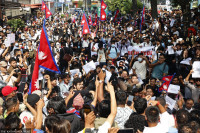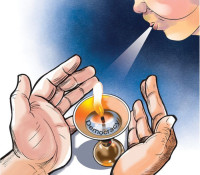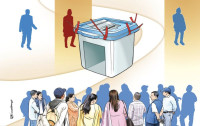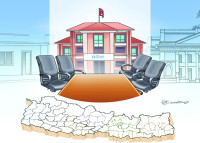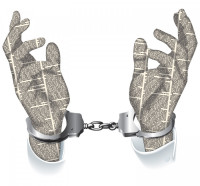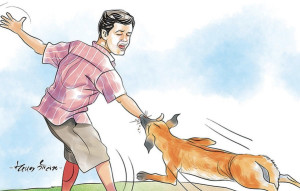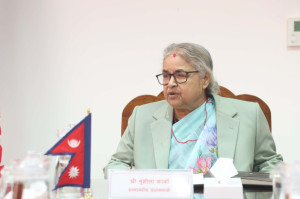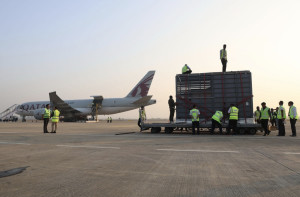Columns
Activating intergovernmental bodies
The more active these organisations are, the stronger Nepal's federal system will be.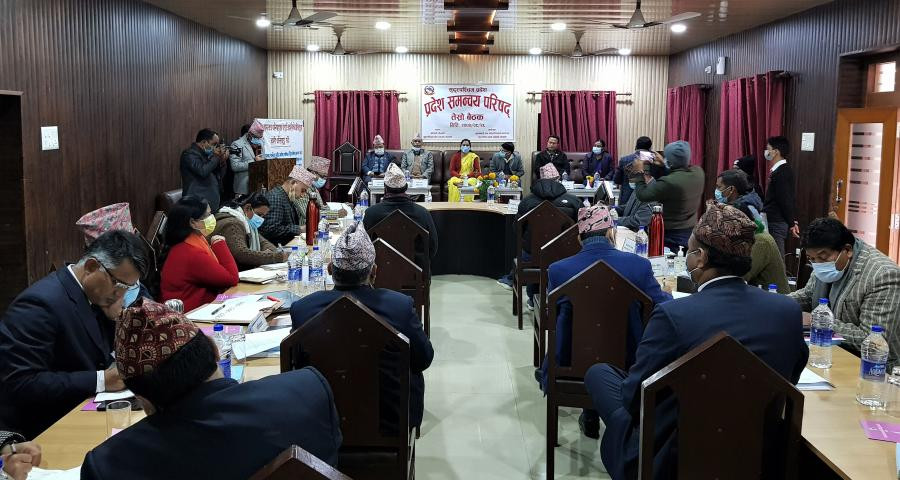
Khim Lal Devkota
In federalism, inter-governmental relationships between federal units help to create effectiveness, transparency, accountability and efficiency at the operation level.
The Federal, Provincial and Local Level (Coordination and Interrelationships) Act 2020 (IGR Law) has been passed to institutionalise intergovernmental relations. In order to facilitate mutual cooperation between the federal units, various intergovernmental relationships and institutional structures (IGR structures) have also been created at the federal and subnational levels.
There are IGR structures like the Interprovincial Council, Intergovernmental Fiscal Council, Provincial Coordination Council, National Coordination Committee and Sectoral Committee.
The Interprovincial Council resolves disputes between the federal and provincial governments or between different provincial governments. The prime minister chairs the council. The finance minister, home minister and the chief ministers of the provinces are its members. Looking back at the last five years of federalism in Nepal, we see that this institution has not been so active.
The council has held only three meetings so far, the last one in 2019. The second meeting approved the Federalism Implementation Action Plan which has identified 84 tasks within 29 thematic areas. According to officials, 40 tasks remain to be completed, most of them related to the drafting of laws.
Important forum
The Provincial Coordination Council is an important forum for intergovernmental relations as it facilitates planning and budgeting issues between provincial and local governments. The chief minister chairs the council, and the provincial finance and internal affairs ministers, the principal secretary and representatives from each district are its members.
The National Coordination Committee manages coordination between various spheres of government. The key tasks of the committee include formulating laws and policies between the spheres of government on concurrent rights, coordinating issues of national interest and maintaining uniformity in service delivery. The prime minister chairs the committee. There is a provision for representation of the local level and involvement of the opposition party in Parliament. The committee has been in existence for more than two years, but no meeting has been held.
Intergovernmental relationships are quite informal, and not as written in the constitution and the laws. Since the prime minister chairs the Interprovincial Council, another similar body is not needed. The local level representative can be invited to its meetings.
This is what I had proposed during my presentation at the State Affairs Committee of the House of Representatives during the drafting phase in 2019. But they did not want any changes as the mechanism had been unanimously approved by the National Assembly. Creating many organisations only complicates things. Why is there a need for such an IGR body if meetings are not to be held?
The main purpose of the Sectoral Committee is to work jointly and coordinate in different thematic areas like education, health, roads and agriculture between the three tiers of government. It is also called a ministerial-level council.
There is a provision for this committee in the IGR Law. It is chaired by the federal minister, and the provincial minister holding the same portfolio and a local representative are its members. Such committees need to be formed in all the ministries, but they have not been established in all of them. According to the Prime Minister's Office, about a dozen ministries have created such structures, but they are not active.
There will not be many problems between the levels of government if this committee holds discussions before drafting laws, especially those related to concurrent rights. It is necessary to have such structures at the relevant ministries and agencies, especially at the provincial level.
Financial matters
The Intergovernmental Fiscal Arrangement Act 2017 contains a provision for the formation of the Intergovernmental Fiscal Council to discuss financial matters between the federal units. It is composed of the federal finance minister, provincial finance ministers, 14 representatives from the local units, and three experts nominated by the federal government. The council is a common forum to discuss fiscal issues between the federal units. Due to a legal arrangement requiring the council to meet annually in March, it is comparatively more active than other IGR structures. Even then, the problem of plan formulation and grant distribution among the different levels of government has not been resolved.
In accordance with the federal structure, the elections for the second term of the federal units have also been held. It has been more than six months since the second term of the local units started. After the recent federal and provincial elections, an assessment of the government formation process has also started. In the recent elections, the presence of anti-federal forces was greater than before. These voices could be loud in Parliament. In such a situation, it is necessary for the federal and provincial governments to pay attention to the functioning of the IGR structures. It is essential to understand that the more active these IGR structures are, the stronger the federal system will be.




 9.59°C Kathmandu
9.59°C Kathmandu
